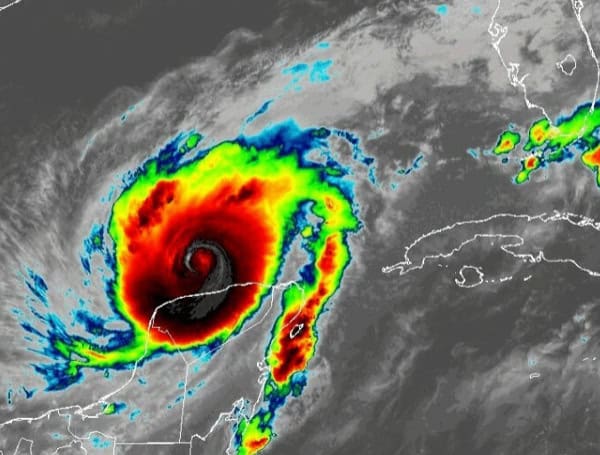Brace for another potentially busy hurricane season. Researchers at Colorado State University (CSU) are predicting above-average activity in the Atlantic basin for 2025, citing unusually warm ocean temperatures and the low likelihood of a storm-suppressing El Niño pattern.
The forecast, released on April 3rd by CSU’s Tropical Cyclones, Radar, Atmospheric Modeling, and Software (TC-RAMS) Team, calls for 17 named storms during the season, which officially runs from June 1 to November 30. Of those, nine are expected to become hurricanes, with four reaching major hurricane strength (Category 3 or higher, with winds of 111 mph or greater).
These numbers significantly exceed the 1991-2020 average of 14.4 named storms, 7.2 hurricanes, and 3.2 major hurricanes. The team anticipates the overall hurricane activity will be about 125% of the average season. This follows an active 2024 season, which was roughly 130% of average and included the devastating impacts of Hurricanes Helene and Milton in the southeastern United States.
READ: Island H2O Water Park Fundraiser Aims To Make Children’s Dreams Reality With Sunshine Foundation
Key Drivers: Warm Atlantic and Neutral ENSO
A primary factor behind the forecast is the above-average sea surface temperatures currently observed in the subtropical eastern Atlantic and the Caribbean Sea. Researchers expect these warm waters, which act as fuel for hurricanes, to persist through the peak of the season (August-October). Warm waters also contribute to lower atmospheric pressure and greater instability, conditions conducive to storm formation.
“When waters in the eastern subtropical Atlantic are much warmer than normal in the spring, it tends to force a weaker subtropical high and associated weaker winds blowing across the tropical Atlantic,” the report states, explaining the mechanism likely leading to sustained warmth.
Additionally, the El Niño-Southern Oscillation (ENSO) pattern in the Pacific is unlikely to hinder Atlantic storm development. While currently in a weak La Niña state, conditions are expected to transition to neutral. Importantly, the probability of an El Niño developing – which typically increases upper-level winds (vertical wind shear) that tear storms apart over the Atlantic – is currently pegged at a low 13% by NOAA. The anticipated absence of El Niño suggests more favorable upper-level wind conditions for hurricanes.
READ: SPCA Tampa Bay To Be Featured On Jeff Corwin’s ‘Extraordinary World’; Launches Adoption Promotion
Historical Context and Landfall Probabilities
This marks the 42nd year CSU has issued its seasonal hurricane forecast, a practice initiated by the late Professor William Gray. The current forecast team includes Phil Klotzbach, Michael Bell, and Levi Silvers. They base their predictions on statistical models and analyses combining historical data (25-40 years) with large-scale predictions from multiple global weather centers.
“So far, the 2025 hurricane season is exhibiting characteristics similar to 1996, 1999, 2006, 2008, 2011 and 2017,” said Klotzbach, lead author of the report. However, he cautioned, “Our analog seasons ranged from having slightly below-average Atlantic hurricane activity to being hyperactive… the large spread… highlights the high levels of uncertainty that typically are associated with our early April outlook.”
READ: Florida Gulf Coast Fishing Report: Hot Weekend Bite Expected – Snook & Reds Firing, Tarpon Arriving
The report also includes increased probabilities for major hurricane landfalls compared to the 1880-2020 average:
- U.S. Coastline: 51% (average 43%)
- U.S. East Coast (incl. Florida peninsula): 26% (average 21%)
- Gulf Coast (Florida panhandle to Brownsville, TX): 33% (average 27%)
- Caribbean: 56% (average 47%)
A Call for Preparedness
While forecasts provide valuable insight, researchers emphasize that they estimate overall seasonal activity, not precise storm tracks. They caution that early-season predictions carry the most uncertainty.
“It takes only one storm near you to make this an active season for you,” warned Michael Bell. Coastal residents are urged to review their hurricane preparedness plans regardless of the seasonal forecast.
The CSU team will issue updated forecasts on June 11, July 9, and August 6.
Please make a small donation to the Tampa Free Press to help sustain independent journalism. Your contribution enables us to continue delivering high-quality, local, and national news coverage.
Connect with us: Follow the Tampa Free Press on Facebook and Twitter for breaking news and updates.
Sign up: Subscribe to our free newsletter for a curated selection of top stories delivered straight to your inbox.
